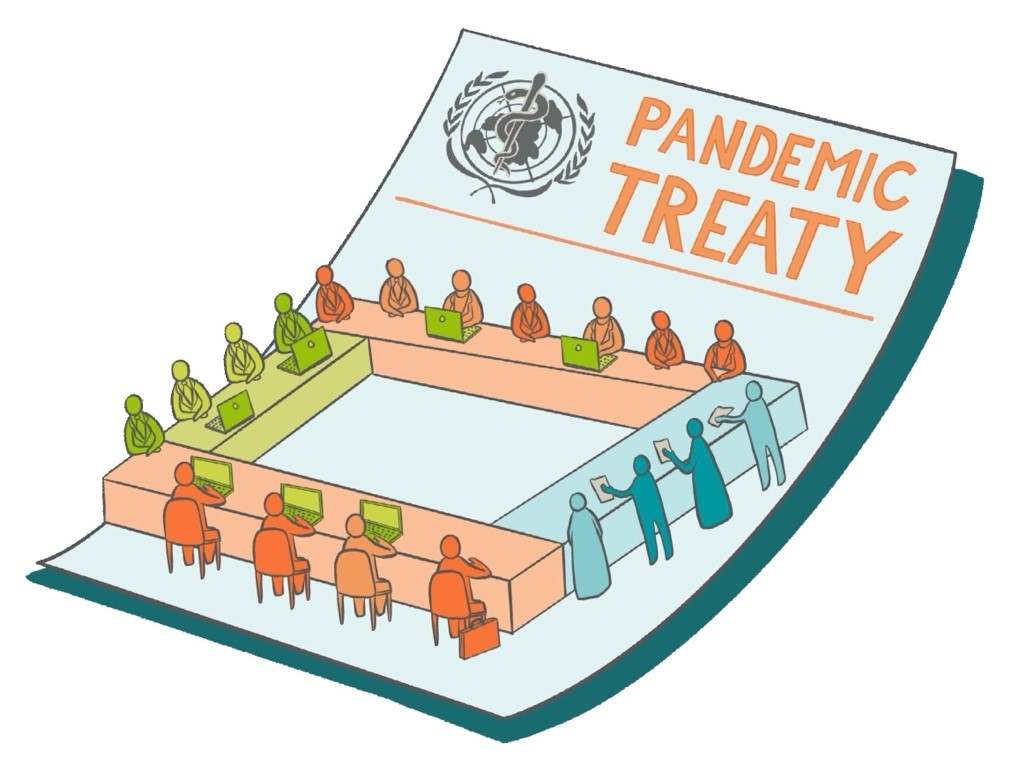Description

Source: MEIG
Disclaimer: Copyright infringement not intended.
Context
- Health officials from the 194 member states of the World Health Organization (WHO) are set to gather in Geneva to finalize negotiations on new rules for pandemic response.
- The negotiations involve 194 member states aiming to finalize two major agreements: updates to the existing International Health Regulations (IHR) and a new pandemic treaty.
- These negotiations, taking place at the World Health Assembly from May 27 to June 1, 2024, represent a significant effort to enhance global health security following the COVID-19 pandemic.
Details
The Pandemic Treaty
Purpose and Rationale:
- The WHO currently operates under the International Health Regulations (IHR) of 2005, which were adopted post-SARS outbreak. While effective for regional epidemics, these regulations are deemed inadequate for global pandemics.
- The impetus for a new treaty stems from the shortcomings observed during the COVID-19 pandemic, particularly the inequitable distribution of vaccines and medical supplies, termed "vaccine apartheid" by DG Tedros.
Key Provisions:
- Article 12: Proposes reserving around 20% of tests, treatments, and vaccines for WHO distribution to low-income countries during emergencies. This figure is still under debate.
- Transparency and Cooperation: Emphasizes faster and more transparent information sharing among countries to prevent and manage pandemics effectively.
Challenges:
- Financing: One of the most contentious issues is the establishment of a dedicated pandemic fund versus utilizing existing resources like the World Bank's $1 billion pandemic fund.
- Political and Sovereignty Concerns: The treaty faces opposition from right-wing groups and politicians who argue it threatens national sovereignty, a claim the WHO denies.

Updates to the International Health Regulations (IHR)
Proposed Changes:
- New Alert System: Introduction of an "early action alert" to improve the response to emerging threats. Currently, the WHO has only one emergency level - a Public Health Emergency of International Concern (PHEIC).
- Pandemic Emergency Declaration: Considering a specific "pandemic emergency" category to address the most severe public health threats.
- Strengthened Obligations: Enhancing the language on countries' duties to inform the WHO about public health events, changing from "may" to "should".
Current Status:
- The IHR updates are more advanced and likely to be agreed upon sooner than the treaty. These updates will automatically take effect after 12 months unless countries opt out.
Negotiation Dynamics
- Major rifts exist between wealthy and poorer nations, especially regarding resource allocation and financial commitments. Mediators have struggled to bridge these gaps, resulting in extended negotiations and missed deadlines.
- While parts of the reforms may be agreed upon at the current assembly, other elements will likely be delayed. The focus will be on planning further negotiations rather than presenting a final draft.
- The new IHR rules and the pandemic treaty are designed to complement each other. However, there is concern that those seeking significant concessions on the pandemic treaty might delay the IHR updates.
Conclusion
The ongoing negotiations at the World Health Assembly are a critical step in strengthening global preparedness and response to future pandemics. The successful implementation of these agreements could transform global health security and prevent the challenges faced during the COVID-19 pandemic from recurring.
Sources:
IndianExpress
|
PRACTICE QUESTION
Q. Discuss the significance and challenges of the proposed pandemic treaty under negotiation by the World Health Organization (WHO). How could this treaty enhance global preparedness and response to future pandemics? (250 Words)
|
















